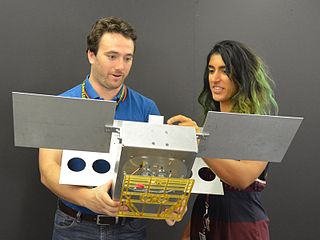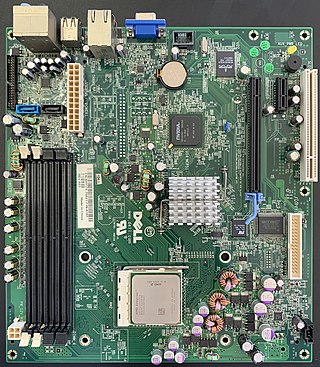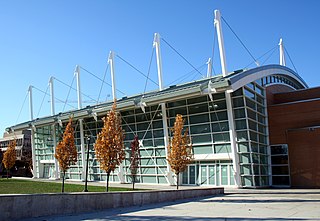Related Research Articles

Mechanical engineering is the study of physical machines that may involve force and movement. It is an engineering branch that combines engineering physics and mathematics principles with materials science, to design, analyze, manufacture, and maintain mechanical systems. It is one of the oldest and broadest of the engineering branches.
Software engineering is a systematic engineering approach to software development.

Engineers, as practitioners of engineering, are professionals who invent, design, analyze, build and test machines, complex systems, structures, gadgets and materials to fulfill functional objectives and requirements while considering the limitations imposed by practicality, regulation, safety and cost. The word engineer is derived from the Latin words ingeniare and ingenium ("cleverness"). The foundational qualifications of an engineer typically include a four-year bachelor's degree in an engineering discipline, or in some jurisdictions, a master's degree in an engineering discipline plus four to six years of peer-reviewed professional practice and passage of engineering board examinations.

Computer engineering is a branch of electrical engineering and computer science that integrates several fields of computer science and electronic engineering required to develop computer hardware and software. Computer engineers not only require training in electronic engineering, software design, and hardware-software integration, but also in software engineering. It uses the techniques and principles of electrical engineering and computer science, but also covers areas such as artificial intelligence (AI), robotics, computer networks, computer architecture and operating systems. Computer engineers are involved in many hardware and software aspects of computing, from the design of individual microcontrollers, microprocessors, personal computers, and supercomputers, to circuit design. This field of engineering not only focuses on how computer systems themselves work, yet it also demands them to integrate into the larger picture. Robots are one of the applications of computer engineering.

A civil engineer is a person who practices civil engineering – the application of planning, designing, constructing, maintaining, and operating infrastructure while protecting the public and environmental health, as well as improving existing infrastructure that may have been neglected.
Regulation and licensure in engineering is established by various jurisdictions of the world to encourage life, public welfare, safety, well-being, then environment and other interests of the general public and to define the licensure process through which an engineer becomes licensed to practice engineering and to provide engineering professional services and engineered product to the public.
Structural engineers analyze, design, plan, and research structural components and structural systems to achieve design goals and ensure the safety and comfort of users or occupants. Their work takes account mainly of safety, technical, economic, and environmental concerns, but they may also consider aesthetic and social factors.
The Fundamentals of Engineering (FE) exam, also referred to as the Engineer in Training (EIT) exam, and formerly in some states as the Engineering Intern (EI) exam, is the first of two examinations that engineers must pass in order to be licensed as a Professional Engineer (PE) in the United States. The second exam is the Principles and Practice of Engineering exam. The FE exam is open to anyone with a degree in engineering or a related field, or currently enrolled in the last year of an Accreditation Board for Engineering and Technology (ABET) accredited engineering degree program. Some state licensure boards permit students to take it prior to their final year, and numerous states allow those who have never attended an approved program to take the exam if they have a state-determined number of years of work experience in engineering. Some states allow those with ABET-accredited "Engineering Technology" or "ETAC" degrees to take the examination. The exam is administered by the National Council of Examiners for Engineering and Surveying (NCEES).
Software engineering professionalism is a movement to make software engineering a profession, with aspects such as degree and certification programs, professional associations, professional ethics, and government licensing. The field is a licensed discipline in Texas in the United States, Engineers Australia(Course Accreditation since 2001, not Licensing), and many provinces in Canada.
A Bachelor of Engineering (BE, BEng or BAI) or a Bachelor of Science in Engineering (BSc (Eng) or BSE) is an academic undergraduate degree awarded to a student after three to five years of studying engineering at an accredited college or university.
The National Council of Examiners for Engineering and Surveying (NCEES) is an American non-profit organization dedicated to advancing professional licensure for engineers and surveyors. The Council’s members are the engineering and surveying licensure boards from all 50 U.S. states, the District of Columbia, Guam, Northern Mariana Islands, Puerto Rico and the U.S. Virgin Islands. These boards are divided into four geographic zones: Central, Northeast, Southern, Western. It is headquartered in Greenville, South Carolina.
Computerized adaptive testing (CAT) is a form of computer-based test that adapts to the examinee's ability level. For this reason, it has also been called tailored testing. In other words, it is a form of computer-administered test in which the next item or set of items selected to be administered depends on the correctness of the test taker's responses to the most recent items administered.
The Comprehensive Osteopathic Medical Licensing Examination of the United States (COMLEX-USA) is a series of three osteopathic medical licensing examinations administered by the National Board of Osteopathic Medical Examiners (NBOME) similar to the United States Medical Licensing Examination (USMLE). COMLEX-USA is the most common pathway by which osteopathic physicians (D.Os) apply for medical licensure, and is accepted in all 50 states. The 3-digit standard scores of COMLEX-USA Level 1, Level 2- Cognitive Evaluation (CE), and Level 3 have a range of 9-999 and a mean of 500. Most candidates score between 250 and 800. 400 is the minimum passing score for COMLEX-USA Levels 1 and 2; 350 for COMLEX-USA Level 3. It was announced on January 24, 2022 that the COMLEX-USA Level 1 examination will be moving from a 3-digit numeric score to solely pass/fail beginning on May 10, 2022.

Electrical/Electronics engineering technology (EET) is an engineering technology field that implements and applies the principles of electrical engineering. Like electrical engineering, EET deals with the "design, application, installation, manufacturing, operation or maintenance of electrical/electronic(s) systems." However, EET is a specialized discipline that has more focus on application, theory, and applied design, and implementation, while electrical engineering may focus more of a generalized emphasis on theory and conceptual design. Electrical/Electronic engineering technology is the largest branch of engineering technology and includes a diverse range of sub-disciplines, such as applied design, electronics, embedded systems, control systems, instrumentation, telecommunications, and power systems.
Engineering education is the activity of teaching knowledge and principles to the professional practice of engineering. It includes an initial education, and any advanced education and specializations that follow. Engineering education is typically accompanied by additional postgraduate examinations and supervised training as the requirements for a professional engineering license. The length of education, and training to qualify as a basic professional engineer, is typically 5 years, with 15–20 years for an engineer who takes responsibility for major projects.
Engineer in Training, or EIT, is a professional designation from the National Council of Examiners for Engineering and Surveying (NCEES) used in the United States to designate a person certified by the state as having completed two requirements:

A building engineer is recognised as being expert in the use of technology for the design, construction, assessment and maintenance of the built environment. Commercial Building Engineers are concerned with the planning, design, construction, operation, renovation, and maintenance of buildings, as well as with their impacts on the surrounding environment.

Architectural engineering, also known as building engineering or architecture engineering, is an engineering discipline that deals with the engineering systems - electrical, fire alarm, structural, mechanical and technological aspects of buildings.
Most of the terms listed in Wikipedia glossaries are already defined and explained within Wikipedia itself. However, glossaries like this one are useful for looking up, comparing and reviewing large numbers of terms together. You can help enhance this page by adding new terms or writing definitions for existing ones.

Power Plant Engineering or Power Plant Engineering abbreviated as TPTL is a branch of the field of Energy engineering, and is defined as the engineering and technology required for the production of an electric power station. Technique is focused on power generation for industry and community, not just for household electricity production. This field is a discipline field using the theoretical basis of mechanical engineering and electrical. The engineering aspects of power generation have developed with technology and are becoming more and more complicated. The introduction of nuclear technology and other existing technology advances have made it possible for power to be created in more ways and on a larger scale than was previously possible. Assignment of different types of engineers for the design, construction, and operation of new power plants depending on the type of system being built, such as whether it is power generation fueled fossil, [[NPP] |nuclear power plant]], hydropower plant, and solar power plant.
References
- ↑ About NCEES
- ↑ NCEES Calculator Policy
- ↑ NCEES; Exam Schedule
- ↑ Exam formats
- ↑ "NCEES: PE Exam". NCEES. National Council of Examiners for Engineering and Surveying. Retrieved 17 November 2014.
- ↑ NCEES; Study Materials
- ↑ Recent Exam Pass Rates